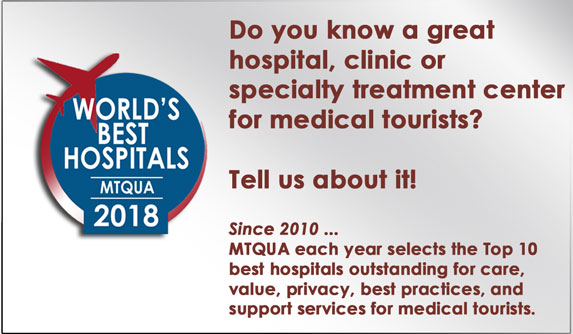 Most hospitals that are operating a medical tourism program tend to ignore a lot of elements of patient care management for their medical tourists. Care management is all about safety – safety for the patient and safety for the provider.
Most hospitals that are operating a medical tourism program tend to ignore a lot of elements of patient care management for their medical tourists. Care management is all about safety – safety for the patient and safety for the provider.
Putting aside the obvious differences a patient encounters between having care at home and traveling abroad for care, medical treatment is becoming increasingly complex and choices for care more often than not require greater knowledge and a more extensive network of care givers than a decade ago.
1. Medical tourist is a stranger in a strange land.
At home, health care consumers can rely on an infrastructure that they probably have grown up with, and is familiar to them.
At home, consumers can rely on quality and compliance officers to make sure rules for safety and quality are followed.
Away from home, in a foreign country, a medical traveler puts himself or herself in the hands of strangers who may or may not abide by rules for safety or quality, if indeed those rules exist.
2. Medical tourist has a higher risk procedure.
At home, patients may seek care for minor illnesses and major, complex procedures. Abroad, they most likely seek care for major illnesses and complex procedures, which inherently hold a greater potential for harm.
3. Medical tourist has no oversight.
At home, patients are typically seen and cared for by providers on the same “team” (same hospital, same team of doctors, same family or friends). A medical mishap is noticed very quickly and be treated. Abroad, the consequences of a medical traveler’s wrong dose of medication or lack of attention to care instructions may not be noticed for days or weeks.
4. Medical tourist may keep secrets.
At home, a patient’s electronic medical record is available to all hospitals, physicians, and nurses treating the patient and, in theory, may prevent errors and speed timing of care. Abroad, some patients may have reasons to hide or mask their medical history. This is easy to do, but complicates or compromises treatment and causes errors or delays.
5. Communication gaps are likely.
Patients may not follow their course of care. Who is to blame? Does the provider properly inform the patient who may have limited language skills, be unwilling to take a prescribed drug for moral or cultural reasons, or simply not recognize the need to follow instructions? Are patients themselves responsible for making sure they take medications as prescribed, follow care instructions in detail, or properly and completely communicate their problems, pains, and symptoms?
6. Medical tourists can slip through the cracks.
What if a physician doesn’t tell the patient about an abnormal test result? The doctor is busy. The patient fails to appear for an appointment. Medical travelers easily slip through the cracks when there is no coordination or team management.
7. No one is responsible for a medical tourist.
No one is accountable. No one is keeping track of every treatment, procedure, instruction, test, appointment. No one is following up moment to moment, day to day.
8. Medical tourists seldom see past the glamor.
Providers are counting on the lack of understanding of health care systems on the part of most medical travelers. A glamorous entrance lobby, a friendly customer service agent, posh private hospital room, and a choice of cuisine easily divert a patient’s focus on the quality and level of treatment and care actually received.

 >
>